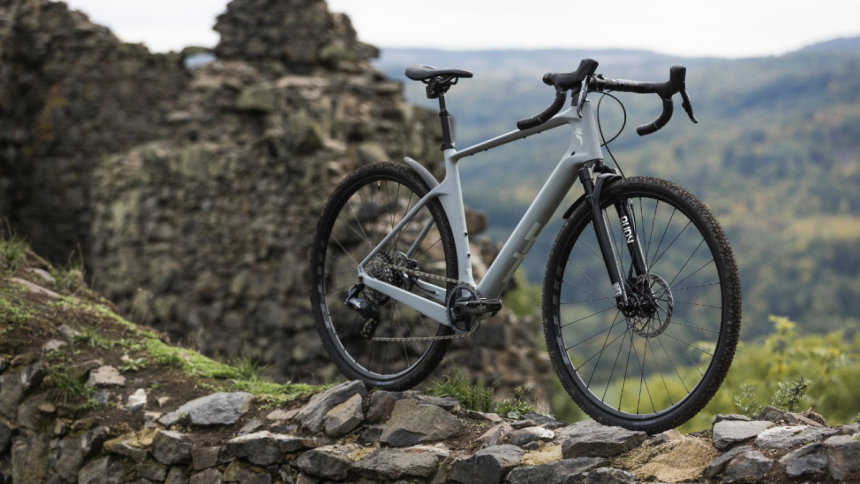Ever read a bike review that felt like it was written in a foreign language? You’re not alone. Many bike reviews are packed with technical jargon that leaves casual riders scratching their heads. The good news? You can write bike reviews that actually make sense to your readers. This guide will show you how to craft clear, helpful bike reviews that both beginners and experts can understand and appreciate.
Technical jargon can create a barrier between your review and your readers
Why Clear Bike Reviews Matter
A good bike review isn’t about showing off your technical knowledge—it’s about helping readers make informed decisions. When you write in plain language, you reach a wider audience and provide more value. Clear reviews build trust with your readers and establish you as a reliable source of information.
Think about it: most people don’t care about the specific carbon layup process or the exact millimeters of suspension travel. They want to know how the bike will feel on their local trails or commute. They want to understand if it’s worth their hard-earned money.
“The best bike reviews translate technical features into real-world benefits that readers can visualize and understand.”
Know Your Audience: Tailoring Your Review Style
Before writing a single word, you need to understand who will be reading your review. Different audiences have different knowledge levels and interests.
Writing for Casual Riders
Focus on comfort, ease of use, and practical features
Explain technical terms in plain language
Use relatable comparisons (e.g., “shifts as smoothly as butter”)
Emphasize value for money and durability
Include information about maintenance requirements
Writing for Enthusiasts
Include more technical details and specifications
Compared to other models in the same category
Discuss performance nuances in different conditions
Analyze component choices and their impact
Still avoid unnecessary jargon that doesn’t add value
Pro Tip: If you’re writing for a mixed audience, structure your review with a simple overview at the beginning, followed by more detailed sections for those who want to dive deeper.
Essential Elements of an Effective Bike Review
A comprehensive bike review should cover several key areas. Here’s what to include to make your reviews thorough and helpful.
Frame Analysis
Discuss the frame material, geometry, and how these affect the ride. Instead of just saying “the head tube angle is 67 degrees,” explain what that means: “The relaxed head tube angle makes the bike stable on descents but less nimble on tight turns.”
Component Evaluation
Cover the drivetrain, brakes, wheels, and other key components. Translate specifications into performance: “The 12-speed drivetrain offers plenty of gears for steep climbs, while the hydraulic disc brakes provide confident stopping power even in wet conditions.”
Ride Quality
Describe how the bike actually feels to ride. Is it comfortable on long rides? How does it handle different terrain? Use vivid language: “The bike floats over small bumps but provides enough feedback to keep you connected to the trail.”
Value Assessment
Evaluate whether the bike offers good value for its price point. Compare it to similar bikes in the same category. “At $1,200, this bike offers components usually found on models costing $300-400 more.”
Intended Use
Clearly state what type of riding the bike is best suited for. “While marketed as an all-mountain bike, it really shines on flowing singletrack rather than technical downhill sections.”
Pros and Cons
Provide a balanced view by highlighting both strengths and weaknesses. Be honest about limitations: “The wide tires provide excellent traction but add noticeable rolling resistance on pavement.”
Ready to Write Better Bike Reviews?
Download our free bike review template to structure your next review like a pro. This template includes all the essential sections, prompting questions, and examples to help you create clear, comprehensive reviews.
Writing Tips: Making Technical Information Accessible
The key to great bike reviews is translating complex information into language that resonates with readers. Here are proven techniques to make your reviews more accessible without dumbing them down.
Use Analogies and Comparisons
Analogies help readers understand unfamiliar concepts by relating them to familiar experiences. Instead of just describing technical details, show how they translate to the riding experience.
| Technical Description | Accessible Analogy |
| “The bike has a stiff bottom bracket.” | “When you pedal hard, the frame feels solid, like pushing off from a concrete wall rather than a springboard.” |
| “The bike features progressive suspension geometry.” | “The suspension feels plush on small bumps but firms up on bigger hits—like a mattress that’s soft when you sit but supportive when you jump.” |
| “The 11-32T cassette offers limited range.” | “The gearing is like having a sports car with no first gear—great for flat roads and moderate hills, but you’ll struggle on steep climbs.” |
Create Clear Pros and Cons Lists
Readers often scan reviews for quick takeaways. A well-structured pros and cons list helps them grasp the key points at a glance.
Pros
- Lightweight frame makes climbing easier
- Responsive handling on tight corners
- Comfortable saddle for long rides
- Durable components that should last several seasons
- Excellent value compared to similar models
Cons
- Limited tire clearance restricts off-road capability
- Entry-level brakes require more maintenance
- Paint chips easily on the downtube
- Heavier than advertised (actual weight: 28.5 lbs)
- Non-tubeless ready wheels require upgrade for tubeless setup
Use Rating Systems Wisely
Ratings can help readers quickly understand your assessment, but they need context to be meaningful.
Always explain your ratings: Don’t just say “3/5 for climbing.” Explain why: “3/5 for climbing: The bike’s weight makes long ascents challenging, but the wide gear range helps compensate on steeper sections.”
Common Mistakes to Avoid in Bike Reviews
Even experienced reviewers can fall into these traps. Being aware of these common mistakes will help you create more effective, reader-friendly reviews.
Overusing Technical Jargon
Problem: “The bike’s BB stiffness and progressive leverage ratio make for excellent anti-squat characteristics.”
Better approach: “The frame doesn’t flex when you pedal hard, and the suspension stays firm during pedaling but still absorbs big impacts well.”
Making Subjective Claims Without Context
Problem: “This is the best climbing bike on the market.”
Better approach: “At 21 pounds with responsive geometry, this bike climbs more efficiently than the five other models in this price range that I’ve tested this year.”
Forgetting to Mention the Testing Process
Problem: Making claims without explaining how you tested the bike.
Better approach: “I rode this bike for three months, covering 500 miles on a mix of smooth singletrack, technical rock gardens, and daily commutes.”
Beware of Industry Influence: Maintain your credibility by disclosing any potential conflicts of interest. If the bike was provided by the manufacturer, say so. Your readers value honesty above all else.
Bike Review Template: A Framework for Clear Reviews
Having a consistent structure helps you cover all the important aspects of a bike while keeping your review organized and readable. Here’s a template you can customize for your own reviews.
1. Introduction (150-200 words)
Start with an engaging hook about your experience with the bike. Briefly mention the bike’s category, intended use, and price point. Include a summary of your overall impression.
Example: “The Trek Fuel EX 8 ($3,299) promises to be a do-it-all trail bike that won’t break the bank. After three months of riding everything from smooth flow trails to technical rock gardens, I’ve found it delivers on that promise—with a few surprising strengths and limitations.”
2. Key Specifications (100-150 words)
List the most important specifications, focusing on those that actually impact the ride. Explain what these specs mean for the average rider.
Example: “The aluminum frame features 130mm of rear suspension paired with a 140mm fork. This mid-travel setup strikes a balance between climbing efficiency and descending capability. At 29.5 pounds (size medium), it’s neither ultralight nor particularly heavy for its category.”
3. Ride Experience (300-400 words)
Describe how the bike feels on different terrain. Use vivid language and specific examples from your test rides. Cover climbing, descending, cornering, and overall handling.
Example: “On climbs, the bike maintains traction surprisingly well. Even on loose, rocky ascents, the rear wheel stayed planted. However, on prolonged climbs exceeding 20 minutes, I found myself reaching for the lockout switch to reduce suspension bob.”
4. Component Analysis (200-300 words)
Evaluate the key components: drivetrain, brakes, wheels, tires, and cockpit. Focus on performance rather than just listing specs.
Example: “The Shimano SLX brakes provide reliable stopping power in most conditions, though they started to fade slightly on a 2,000-foot descent in 90-degree heat. The lever feel remains consistent, with a distinct engagement point that’s neither too grabby nor too soft.”
5. Value Assessment (100-150 words)
Discuss whether the bike offers good value compared to competitors. Mention any standout features or compromises at the price point.
Example: “At $3,299, the Fuel EX 8 competes directly with the Specialized Stumpjumper Comp ($3,200) and Giant Trance 29 2 ($3,100). The Trek offers better suspension components than both, though the Giant features a carbon front triangle at a similar price.”
6. Conclusion with Pros/Cons (150-200 words)
Summarize your findings and provide a clear recommendation. Specify what type of rider would benefit most from this bike.
Example: “The Trek Fuel EX 8 excels as a versatile trail bike that can handle a wide variety of terrain. It’s best suited for riders who prioritize all-around performance over specialization in any one area. Weekend warriors who ride a mix of trails will appreciate its balance of climbing efficiency and descending capability.”
Practical Examples: Before and After
See how applying these principles can transform a confusing, jargon-heavy review into something clear and helpful.
Before: Jargon-Heavy
“The bike’s 66.5° head tube angle combined with a 74° seat tube angle and 435mm chainstays create a balanced geometry that offers decent anti-squat properties. The Boost spacing provides increased wheel stiffness while the 1x drivetrain with a 32T chainring and 10-50T cassette delivers a 500% gear range.”
After: Clear and Accessible
“The bike strikes a nice balance between stability and agility. It feels planted on descents without being sluggish on flat terrain or climbs. When pedaling uphill, the suspension stays firm instead of bobbing, which saves energy. The wide range of gears gives you both a super-easy climbing gear for steep hills and enough high-end speed for fast descents.”
Before: Vague Statements
“The bike has great components for the price. The suspension performs well in most conditions, and the overall ride quality is good. Most riders will find it meets their needs.”
After: Specific and Helpful
“At $2,500, this bike offers components usually found on $3,000+ models, like the Fox Performance suspension and complete Shimano XT drivetrain. The suspension handles small bumps smoothly while still providing support on bigger drops up to about 3 feet. Weekend trail riders and daily commuters will appreciate its versatility, though dedicated downhill riders might want something more specialized.”
Join Our Bike Reviewer Community
Connect with other bike reviewers, share your work, and get feedback from experienced writers. Our community helps you refine your review skills and build your audience.
Conclusion: Your Path to Better Bike Reviews
Writing bike reviews that people actually understand isn’t about dumbing down your content—it’s about making it more accessible and useful. By focusing on your audience’s needs, using clear language, and providing context for technical information, you can create reviews that help readers make informed decisions.
Remember that the best bike reviews translate features into benefits and specifications into experiences. They help readers visualize how a bike would fit into their riding life. When you master this skill, your reviews won’t just inform—they’ll inspire.
Start applying these principles to your next bike review. Your readers will thank you, and you might just find that writing becomes more enjoyable when you focus on clear communication rather than technical showmanship.
“The goal of a great bike review isn’t to demonstrate how much you know—it’s to help your reader make the right choice for their needs, budget, and riding style.”
Lynn Martelli is an editor at Readability. She received her MFA in Creative Writing from Antioch University and has worked as an editor for over 10 years. Lynn has edited a wide variety of books, including fiction, non-fiction, memoirs, and more. In her free time, Lynn enjoys reading, writing, and spending time with her family and friends.















